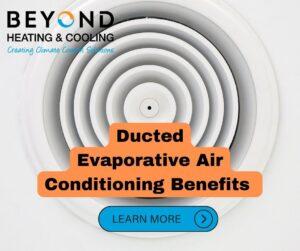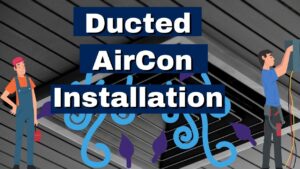Better Ventilation and Heating and Cooling
Have you ever wondered what HVAC is or why ventilation is so important?
HVAC stands for Heating, Ventilation, and Air Conditioning.
Heating And Cooling Melbourne
In Melbourne, we all have heating and air conditioning, but do we ever consider the ventilation essential to keep a home and its residents healthy with the air they breathe?
A high quality of life necessitates clean, healthy indoor air.
When the air quality is good, it is much more comfortable to work without constantly opening the windows and coming home to fresh air.
Without a ventilation system to deliver fresh air, moisture, odours, and other pollutants can accumulate in the residence.
Rather than depending on airflow through open windows or air vents, a ventilation system circulates fresh air through ducts and fans.
Ventilation is one method of bringing fresh air into a home or business by utilising passive factors such as wind speed or pressure differential between the inside and outside.

A well-ventilated home is essential for saving energy.
As homes become more airtight due to increased window sealing and the elimination of holes in floors and walls, less fresh air enters and departs.
Improved airtightness ensures that indoor air pollution from sources such as your gas stovetop, cleaning products, gas heating, and mould spores are contained within your home. This is why, especially in colder weather, proper ventilation is critical.
Ventilation also aids in moisture control, which can lead to mould growth and structural damage.
Let’s start with a definition of ventilation and the numerous types of ventilation strategies.
Why do we need it?
And why is it necessary in our homes or buildings?
The process of delivering fresh air into a building or room and dispersing it throughout the space is known as ventilation. The basic purpose of home ventilation is to provide a safe atmosphere for humans to breathe in.
What is the significance of adequate ventilation in homes and buildings?
Adequate building ventilation enhances air quality by eliminating pollutants and CO2, as well as managing humidity and minimising the risk of condensation. It is also possible to improve energy efficiency and thermal comfort.
Air quality can be impacted by a variety of contaminants, ranging from low-level irritants (dust, pollen) to radon and volatile chemical compounds.
If humidity levels are excessively high in wet or chilly places, particularly in uninsulated buildings, there is a substantial risk of condensation, which can lead to mould growth and other health issues.
Australia, for example, has high asthma rates by worldwide standards, and inadequately ventilated homes have had a substantial influence on the respiratory system.
Furthermore, many people who have relocated to Australia from cold areas remark that their homes in Australia are more difficult to heat than in nations with fluctuating temperatures.
Techniques for ventilation
Natural, mechanical, and hybrid (mixed) ventilation are all options.
Natural air movement
The bulk of Australian dwellings relies on natural ventilation, which is achieved through the combination of open windows and structural defects (gaps and holes around windows and doors).
This sort of ventilation is largely ineffectual; adequate natural ventilation is based on fluctuations in pressure and temperature. To create airflow into and through a structure, the finest designs use crossflow and chimney concepts.
Open windows and doors provide for natural circulation; but, due to ducted heating and cooling, people keep their homes closed all year.
Why can’t we rely on natural ventilation to provide fresh air?
Natural ventilation is unpredictably and uncontrollably unpredictable.
Natural ventilation is influenced by the airtightness of the house, outside temperatures, wind, and other variables.
Modern homes are extremely airtight, ensuring that no energy spent on heating and cooling is lost.
Natural ventilation may not be sufficient to remove contaminants from some dwellings in moderate weather.
Furthermore, a poorly sealed home becomes draughty, uncomfortable, and expensive to heat and cool in windy or harsh weather.
As a result, there is a need for a mechanical ventilation system.
In addition, ventilation remains an issue in Melbourne’s older homes. Thermal insulation methods used at the time frequently resulted in insufficient outside air flowing through window and door crevices. This raises the possibility of a conflict of interest between adequate thermal insulation and the demand for fresh air, which mechanical ventilation systems might help to resolve.
Mechanical ventilation
Mechanical ventilation is foreign to most Australians, however, it has been employed in other structures such as workplaces and hospitals.
Mechanical ventilation with heat recovery (MVHR).
These provide regular ventilation to keep inhabited buildings’ indoor air quality at a high level.
It brings in fresh, filtered air while eliminating damp and stale air from the building.
Mechanical ventilation ensures that fresh air is delivered in a consistent and controlled manner.
Mechanical systems are generally thought to be unneeded for homes, yet the variable Australian climate encourages us to have better-sealed dwellings. As a result, better ventilation and air quality have grown in importance.
Mechanical ventilation, which utilises fans to move air into and around a building, solves this problem. Mechanical ventilation is controlled via fans. To circulate air into or out of a space, fans can be put directly in windows or walls, or in air ducts. This technology eliminates CO2 and volatile organic compounds, which are common indoor contaminants (VOCs).
A balanced mechanical ventilation system has an air supply and exhaust system that has been tested and matched to the design standards.
The Benefits of a Ventilation System
They have increased the quality of the indoor air. Indoor air, on the other hand, might be more contaminated than outside air, and the average Australian spends 90% of their time indoors.
Ventilation systems may greatly enhance a home’s air quality by removing allergens, pollutants, and moisture that can create mould problems.
More strength. When homes rely on airflow via walls, roofs, and windows for ventilation, you have no control over the source or volume of air entering the house.
The right ventilation system will draw outside air from the best sources. You don’t want air from a wet crawl area or your garage, or cars with their engines running, to enter your home, for example.
Smaller rooms with condensation and mould difficulties, such as small bedrooms and bathrooms, are ideal sites for ventilation and exhaust.
Mechanical ventilation systems bring in fresh air from outside while also filtering, dehumidifying, and treating the entering air.
If you pick a mechanical ventilation system, ensure that the unit and installation comply with Australian Standard (AS) 3666.1 “Air handling and water systems of a building – Microbial control.”
As a result, the needed flow rate and noise level will be determined. In addition, the unit must comply with AS 1668.2 “Mechanical ventilation for acceptable indoor air quality.”
All heating, cooling, and ventilation systems are included.
You have more options for optimum ventilation with your ducted heating and cooling system.
We can inform you which brands provide stand-alone ventilation systems. Daikin is one such company that provides MVHR systems.
Air conditioners can do air purification
On high-end air conditioners, ionisation filters are available.
These are capable of dealing with minor amounts of pollutants on a daily basis.
Dust filters are standard in all air conditioners, but for tiny particles like smoke or CO2, you’ll need more than simply a dust filter.
Ionisation filters
Ions (charged particles) are formed inside an air conditioner’s inside the unit and are utilised to capture or degrade polluting particles such as dust, pollen, or germs.
Ions bond to undesirable particles and break them down in the following ways:
Oxidisation
Changing the particle’s electrical charge attracts it to a surface where it becomes trapped.
HEPA filters continue to be the most effective purifiers.
A HEPA filter (high-efficiency particulate air) is the most effective technique to remove very minute particles such as smoke, mould spores, pollen, and viruses. These are frequently promoted on vacuum cleaners to prevent the spread of small dust and particles.
HEPA filters are thick filters that cannot handle high airflow rates. As a result, they are inappropriate for air conditioners that require vast amounts of air to be dispersed.
A smaller stand-alone device may be appropriate if you’re looking for an air purifier.
Do you require professional assistance with the ventilation system in your house or building?
So, why put it off? Please contact us as soon as possible!
Beyond Heating and Cooling professionals are highly knowledgeable and have completed many residential and commercial ventilation projects.
The post Ventilation, Heating And Cooling In Craigieburn appeared first on https://wookicentral.com
The post Ventilation, Heating And Cooling In Craigieburn appeared first on https://gqcentral.co.uk






Comments are closed